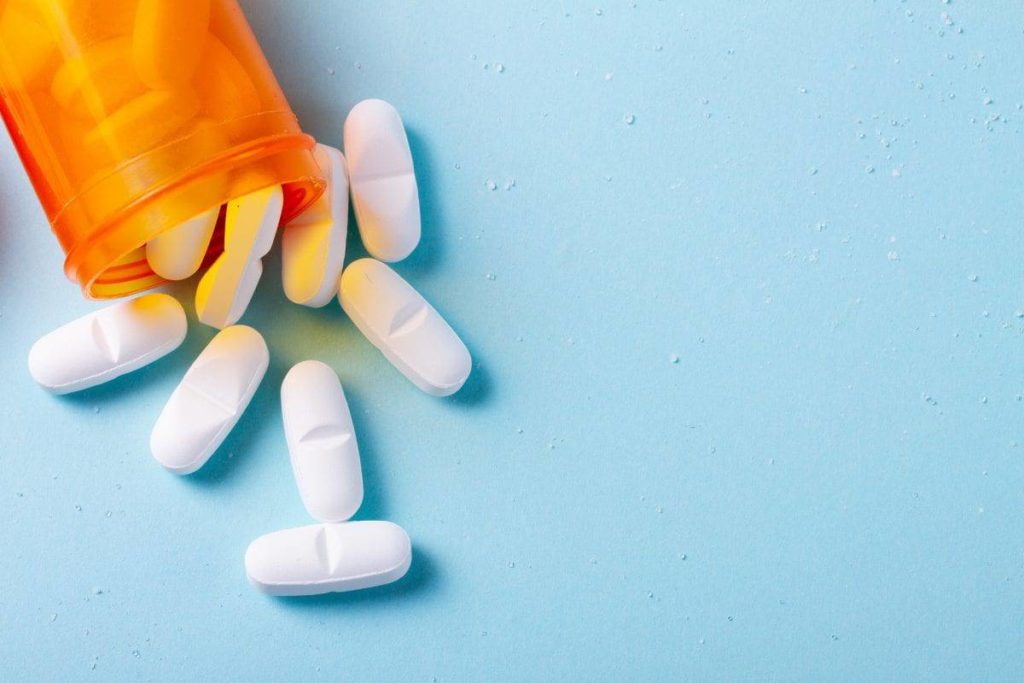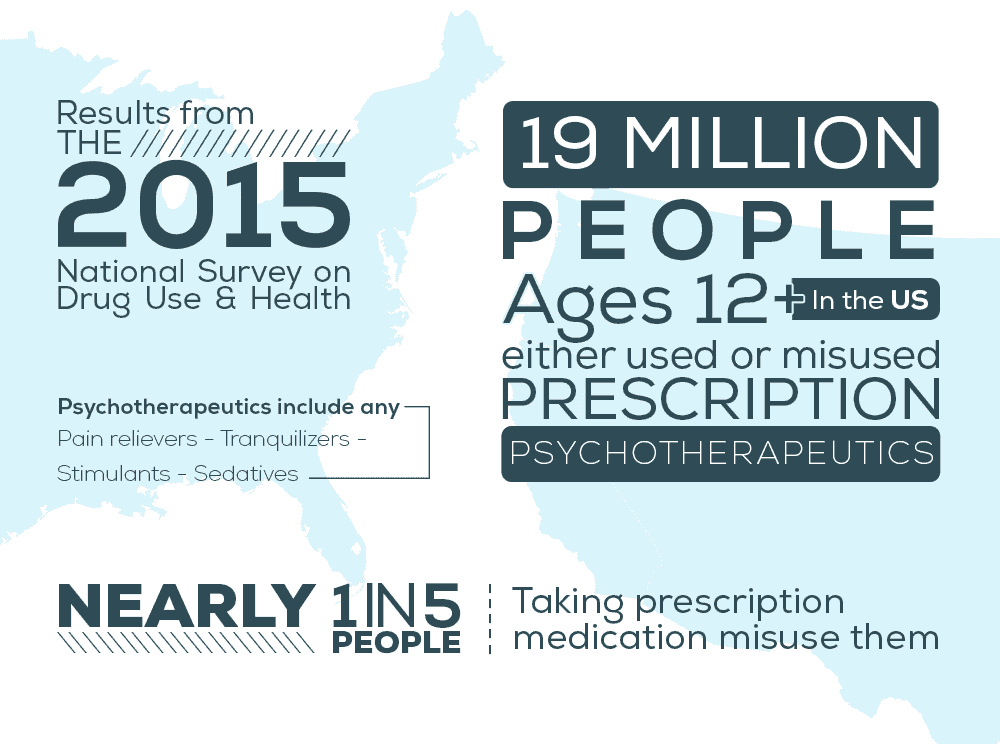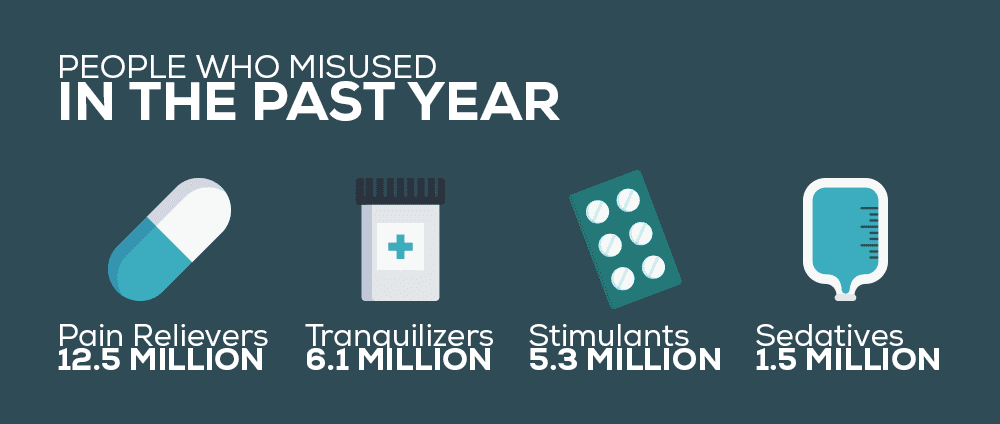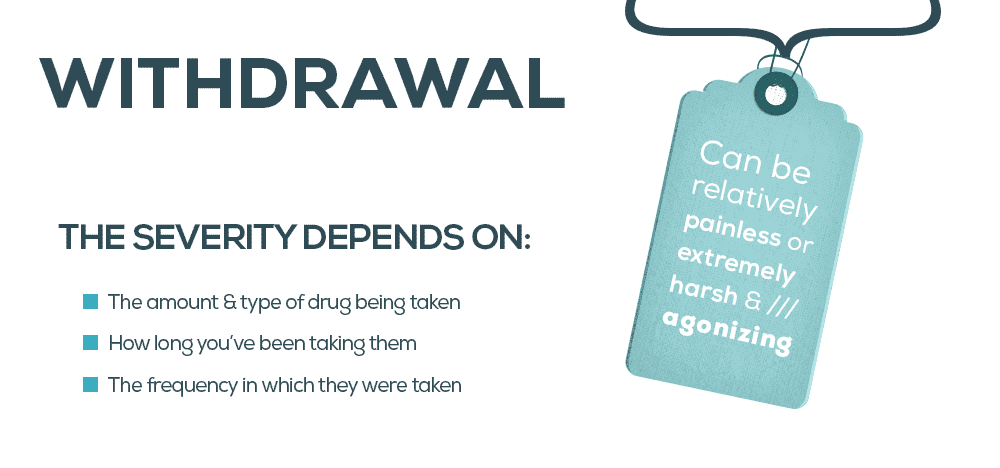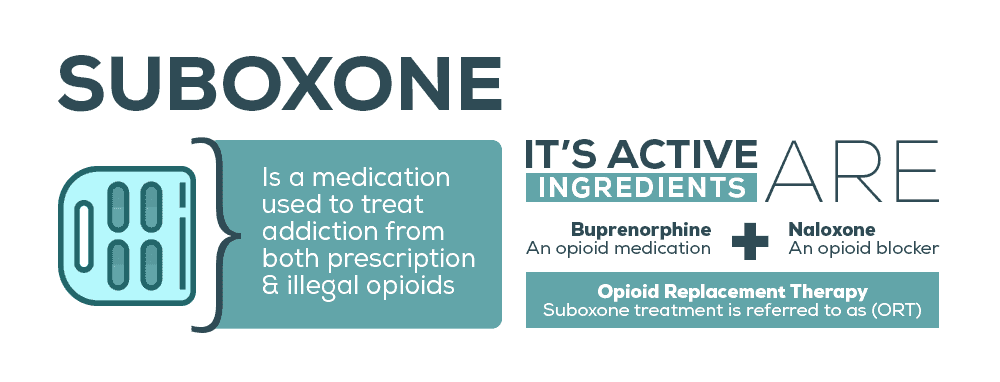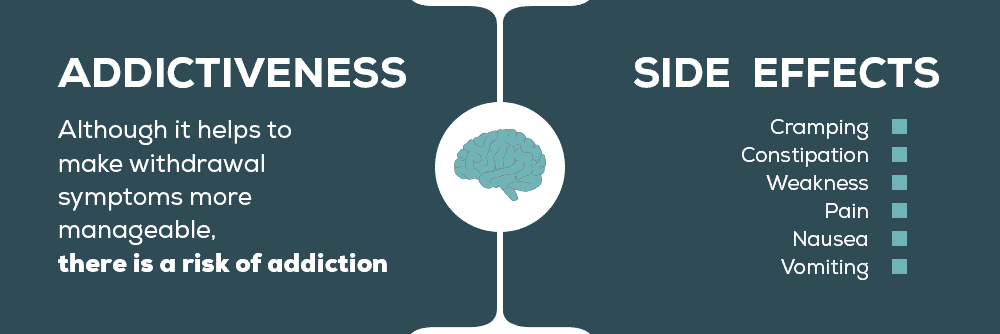Suboxone is a useful drug to help addicts through withdrawals when they are getting sober from opiates. Awareness surrounding the abuse of prescription opioid medications has exploded over the past decade. Once a seemingly innocent trip to the doctor has now become a daunting task. For years, many considered marijuana, copped on street corners and sold in ZipLoc baggies, to be the gateway drug to harder substances. But it’s turning out to be quite the opposite: Who would have thought the gateway drug introducing millions of Americans to drugs like methamphetamines or heroin are our own doctors?
The Numbers on Prescription Medication in the United States
Millions of Americans find themselves asking this question every year. After all, 119 million people ages 12 and older in the United States, or 44.9 percent of the total population in that age range, either used or misused prescription psychotherapeutics in 2015. Every year, the Substance Abuse and Mental Health Services Administration (SAMHSA) conducts the National Survey on Drug Use and Health (NSDUH). Results above are pulled from the study conducted in 2015. For the sake of the NSDUH, psychotherapeutics includes any:
- Pain relievers
- Tranquilizers
- Stimulants
- Sedatives
Of these 119 million people who used prescription drugs, 18.9 million people (or 7.1 percent of those with prescription drugs) misused those medications. This includes the misuse of medication by those who have a prescription with their name on the bottle. Just because it’s your prescription doesn’t mean you can’t abuse it.
“We offer medical detox and rehabilitation and take many health insurance plans. Take a look at our 28 day program.”
18.9 million individuals ages 12 and older misused either theirs or someone else’s prescription medication in 2015. Including the crossover between those who used combinations of the various medications, the following number of people misused each different type of drug:
- 12.5 million people misused pain relievers in the past year
- 6.1 million people misused tranquilizers in the past year
- 5.3 million people misused stimulants in the past year
- 1.5 million people misused sedatives in the past year
What Do These Numbers Mean? How Could I Become an Addict?
Though compared to the entire population these numbers may seem small, when nearly 1 out of every 5 people taking prescription medication misuse it, there is a problem. More than 15 percent of those using psychiatric medication take it not as prescribed or take it when it isn’t prescribed at all. However, many individuals dependent upon prescription medication would not consider themselves addicts. There is a fine line between addiction and dependence but one can decide for themselves whether or not they’ve crossed it. Dependence refers to the body’s development of a dependence upon a medication. If you take something every day to help manage pain, your body becomes used to that artificial pain relief. If you suddenly remove the incoming pain relieving medication, it will be jarring to your body. Abusing medication refers to taking more medication than prescribed or taking it more often than prescribed. It can also refer to ingesting it in ways it isn’t intended to be ingested, such as snorting it or taking it intravenously. Dependence doesn’t necessarily imply abuse and abuse doesn’t necessarily imply dependence. You can be dependent upon a medication while taking it as prescribed. You can have a single night where you abuse a medication or drug and never become dependent on it. However, abuse usually refers to repeated abuse of drugs, where dependence is a part of the equation. The reason dependence and abuse are often confused is because of the withdrawal process usually involved in both. There is a guaranteed withdrawal process when dependent upon a drug and more often than not when abusing a medication.
What is an Opioid or Opiate Withdrawal Like?
The severity of opioid and opiate withdrawal depends on the amount of drugs taken, how often you were getting high, and how long you were getting high for. The withdrawal process can either be relatively painless if you didn’t use much or can be so severe you need to be hospitalized. Opiate withdrawal symptoms within the first 24 hours include:
- Muscle aches
- Restlessness
- Anxiety
- Teary eyes
- Runny nose
- Excessive sweating
- Difficulties sleeping or complete sleeplessness
- Yawning
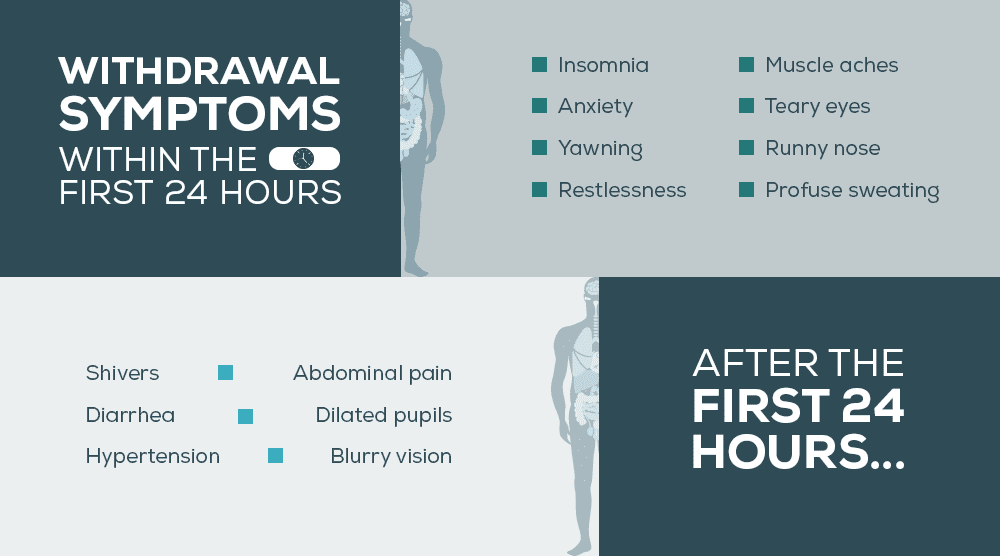
- Diarrhea
- Abdominal cramping
- Goose bumps on the skin
- Nausea and vomiting
- Dilated pupils
- Possible blurry vision
- Rapid heart rate
- High blood pressure
For those who will experience a significant withdrawal process, seeking the help of addiction treatment will alleviate the pain of the process. While it is possible to detox on your own, when you detox with the help of something like Opioid Replacement Therapy, the withdrawal period instantly becomes more manageable.
What is Suboxone? What is Opioid Replacement Therapy?
Suboxone is a drug made with buprenorphine and naloxone, available only by prescription from a suboxone doctor. It is used to treat significant amounts of pain pain as well as to help drug addicts withdraw from opiates and/or opioids. When used as a medication to manage withdrawal symptoms, suboxone treatment is referred to as Opioid Replacement Therapy (ORT). The prescription drug comes in multiple forms, such as suboxone strips or suboxone pills. Neither is better than the other; they simply offer alternative methods of delivery. Suboxone strips are the most common way to take the medication, with the film strips placed underneath the tongue. Suboxone pills are another option and also taken by placing them underneath your tongue. Your suboxone doctor will determine the best length of time between doses. Taking suboxone without a doctor’s prescription or supervision is highly discouraged. 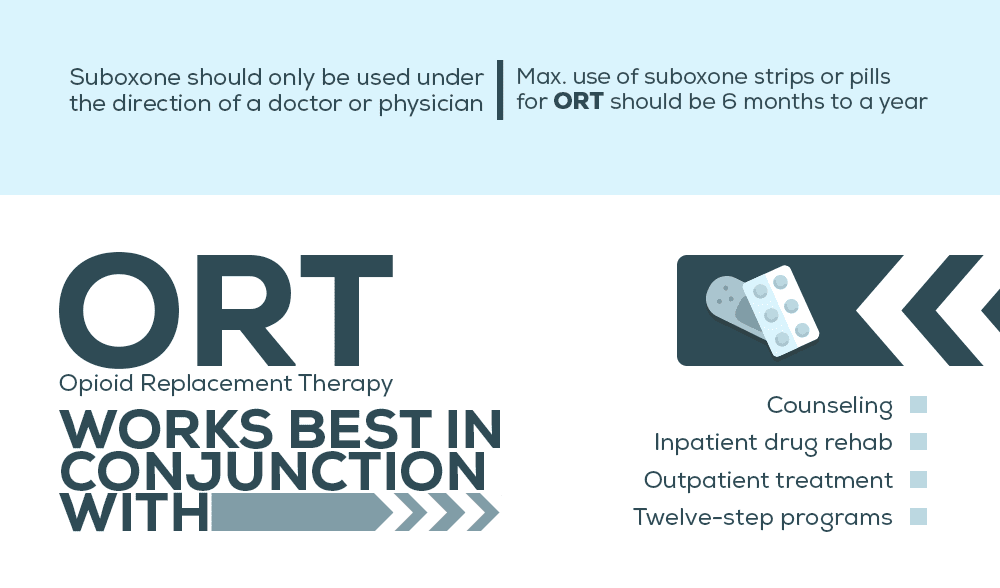
How Can Suboxone Help People During Detox and Withdrawals?
Suboxone pills and suboxone strips are still technically an opioid medication and referred to as a narcotic. Because they are an opioid, they interact with the same receptors as opiate and opioid drugs like heroin and painkillers do do. This explains the reason for the name Opioid Replacement Therapy treatment. Since the suboxone activates the same receptors as other opiate and opioid drugs, it helps to decrease the withdrawal symptoms experienced during detox. Suboxone is helpful when used under the direction and care of a doctor or physician. They can prescribe the proper amount of medication needed for your specific situation. Due to suboxone still being an opioid medication, the potential for addiction and abuse still exists. This is why taking the detox medication under the supervision of your suboxone doctor, physician, or in an addiction treatment environment is the best idea. There are options for both inpatient and outpatient suboxone strips treatment depending on the location you live in. You should consult with your suboxone doctor to determine your chance of relapse if you were to take the medication on an outpatient basis.
How to Get the Best Results From Suboxone and Opioid Replacement Therapy
Medication should not be the only preventative measure used for opioid replacement therapy. ORT works best in conjunction with one or more of a few options:
- Counseling: Meeting with a certified therapist or drug and alcohol counselor at least once a week can help you learn how to manage your day-to-day life without having to go back to drugs
- Twelve-step programs: Using a 12-step program to help you stay sober is always beneficial. The biggest benefit of 12-step recovery is the lack of any cost; the members are there simply to help themselves and the newcomer stay sober.
- Inpatient drug rehab: Suboxone works well when used in an inpatient environment where doctors can monitor usage and ensure there is no abuse of the medication.
- Outpatient medication-assisted treatment: If cost is a barrier to inpatient drug rehab, medication-assisted treatment on an outpatient basis is another option. You check in usually once a week with a doctor who assesses your progress and provides a dose of medication.
Trying to get and stay sober using suboxone alone is a difficult and sometimes dangerous process. While suboxone strips and suboxone pills relieve the withdrawal symptoms, you might use that as a reason to believe your addiction wasn’t that bad. When you surround yourself with fellow addicts who understand what you’re going through, your chances at long-term recovery and sobriety are much higher. It can be difficult to stay sober on your own, especially if you’re still living in the environment you used in.
Length of Time You Should Take Suboxone Pills or Strips
Opioid replacement therapy with suboxone strips and suboxone pills can be taken either on a short-term or long-term basis. Your suboxone doctor will determine the best course of treatment to help treat your addiction. Just like every person’s addiction is different, there is no one-size-fits-all for treatment. Every addict must be seen as an individual and treated on a case-by-case basis. This is where attending inpatient detox for opioid replacement therapy is useful; doctors check in on you periodically throughout the day to ensure the process is as smooth as possible. The longest you should use suboxone strips or suboxone pills for ORT is six months to a year. Again, the best way to find out how to treat your specific case is to meet with a suboxone doctor and receive an assessment. They will decide on a proper course of treatment for your case.
Suboxone: Just As Addictive As Other Opiate and Opioid Drugs
As mentioned earlier, suboxone is referred to as opioid replacement therapy for a reason. It acts on the same receptors as other opiates and opioids like heroin and painkillers. Because of this, the withdrawal process isn’t as severe or unmanageable. However, also because of this, there is a high potential for addiction to the medication. There are treatment centers who specialize in detoxing addicts who were trying to get clean using suboxone and found themselves addicted to it. This may be alarming and it should be; suboxone is not a medication to be taken lightly. You should only use suboxone pills or suboxone strips in opioid replacement therapy if you are serious about getting sober. If you don’t have a desire to get clean, you’ll simply find another avenue to get high when you begin using suboxone. Avoid this and only use ORT when you really want to get sober.
Suboxone Side Effects: Is It Worth It?
As with all medications, suboxone does not come without its own set of side effects. When compared to the effects of withdrawals from opiates and opioids, the side effects of suboxone pills and suboxone strips are rather minimal. When taking suboxone, some of the side effects you might experience are:
- Abdominal or stomach pain or cramping
- Difficulties having a bowel movement (constipation)
- Limited or lacking strength
- Nausea or vomiting
- Pain
- Difficulties sleeping
- Back pain
- Diarrhea
- Runny nose
- Sneezing
- Stuffy nose
Not everyone will experience the same side effects but there is a possibility you could be one of them. When talking with your doctor you can decide whether the side effects you will experience are worth it. When considering the alternative of continued drug use, though, suboxone side effects seem to be a small price to pay. Opioid replacement therapy helps thousands of addicts recover each year. You can talk either with your primary care physician or get in touch with the staff at a specialized addiction treatment center to find out more about your options available to you. You don’t have to struggle with opioid or opiate addiction alone; there are options available to you if you are willing and do the work to reach out.
What Did you Think About This Blog?
Give it a Rating!

